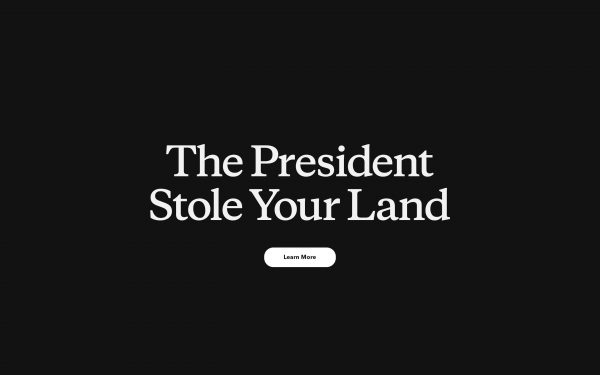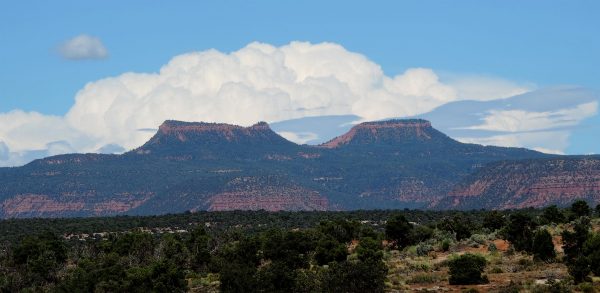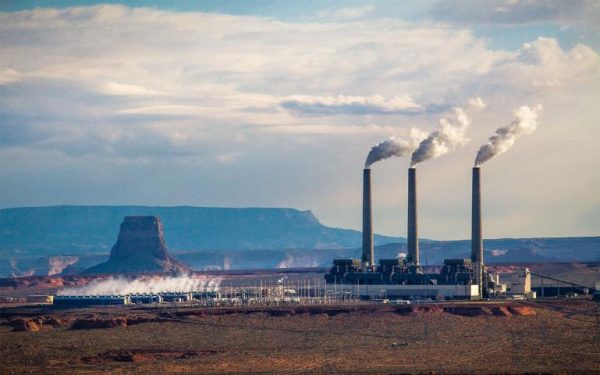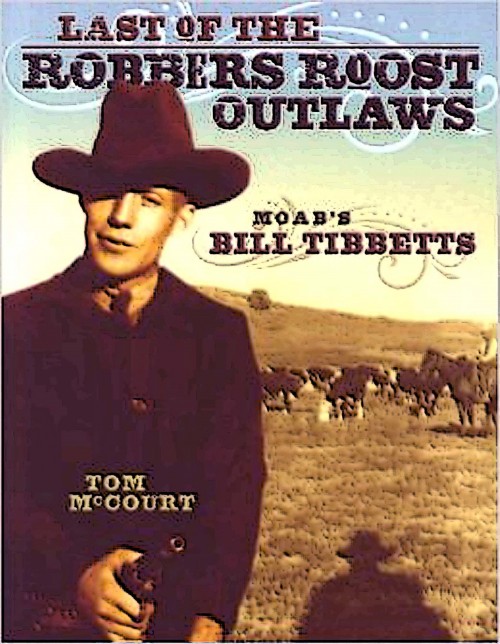On Dec. 4, 2017, President Trump signed a proclamation at a made-for-media event inside Utah’s Capitol in Salt Lake City that shrank Bears Ears and Grand Staircase-Escalante national monuments. The executive decree slashed two of his Democratic predecessor’s executive decrees – Bill Clinton’s Grand Staircase by half and more than 1 million acres from Barack Obama’s Bears Ears.
Tit-for-tat.
From the reaction of environmental activists, you’d think the Earth was about to stop spinning.
When Outdoor Retailer (formerly of Salt Lake City, now of Denver) and Snow Shows debuted in January, industry leaders and environmental groups projected on the side of a downtown building a doomsday-style clock. It depicted time remaining before oil, gas and mineral leases would become available in the public lands targeted by Trump. It painted a picture of an unrestrained drilling bonanza, apparently intended to whip up a frenzy among “tree huggers, bunny lovers and rock lickers” (Utah Rep. Mike Noel’s ever-quotable coinage). Gold rush days revisited. Yee-Haw!
By the first week in February, the Bureau of Land Management office in Salt Lake City had seen no bump in mining claims. “Environmental groups are once again raising fears about this being mined, but practically speaking there’s very little chance of that happening,” Luke Popovich, a spokesman at the National Mining Association.
At least one stalwart had filed, however. A guidebook and freelance writer wrote 2,700 words for REI’s “Co-Op Journal” documenting the process of staking a mining claim to prevent it from being mined. She said she was inspired by a similar tactic used by the Grand Canyon Trust in Grand Staircase–Escalante National Monument in the ’90s.
“Just a week before the administration’s decision to resize Bears Ears and Grand Staircase took effect, we dreamed up the scenario of effectively ‘racing’ miners in order to ‘block’ them. If successful, perhaps larger conservation groups and corporations could follow suit and we could collectively protect these sensitive areas that are susceptible to future mining,” Morgan Sjogren wrote.
The self-proclaimed “outdoor athlete” could be the only person to have profited from the “gold rush” unleased by Trump’s proclamation – at least so far.
REI and Sjogren, more than likely, considered their efforts part of the larger pro-monument public relations campaign. However, if comments posted below her story reflect any larger sentiment, it might have backfired: “So, REI, the same week you act like you are on the moral high ground by stopping orders of brands owned by Vista Outdoors, you celebrate this vapid narcissist who disrespects Native Americans and their sacred lands? Are you kidding me? You are hypocrites. This self-absorbed woman who claims to know the Bears Ears region better than anyone else? Better than generations of Native Americans? Who fails to mention in her writings about the sacredness of the lands and photographs herself being disrespectful to the sacred spaces for Native Americans?” (REI put a hold on orders from Vista Outdoor after the company failed to issue a statement following a mass shooting in Florida. Vista sells firearms. REI doesn’t sell firearms, but it does sell other equipment that comes from Vista.)
I sent an email sent to REI’s board of directors requesting comments regarding the company’s possible legal liability related to hiring a writer who admitted publicly that she had no intention of mining.
 Here’s the response from Halley Knigge, who, according to her LinkedIn page, is manager of communications and public affairs at REI.
Here’s the response from Halley Knigge, who, according to her LinkedIn page, is manager of communications and public affairs at REI.
 The hubbub over mining claims was part and parcel of “sky is falling” bombast.
The hubbub over mining claims was part and parcel of “sky is falling” bombast.
“Trump raids national treasures.”
“Salt Lake County is out in force to protest the destruction of our public lands.”
“This is a shameful and illegal attack on our nation’s protected lands.”
“This unprecedented perversion of the Antiquities Act is a national stain.”
Although “perversion” and “national stain” are pretty darn good, my favorite comes from the marketing juggernaut, Patagonia, Inc.: “The president stole your land.”
Resist.
Buy our $400 ski parka.
A second wave, likely prompted by money-tree shakers at nonprofits, outlined likely consequences. A handy word, “likely.” Even handier is “more than likely.”
I couldn’t resist a temptation to join the Speculation Fest. So, for what it’s worth, here are my top Top 10 more-than-likely outcomes of the Bears Ears kerfuffle, plus a bit of irony thrown in here and there.
No. 10 – More than likely, Bears Ears and southeastern Utah will see increasing numbers of visitors drawn to the region in part by a multimillion dollar, multiyear campaign devised, funded and administered by recreation and tourism corporations, non-government tribal groups and some of the nation’s richest conservation-oriented philanthropic foundations and nonprofits – the William and Flora Hewlett Foundation, the Wyss Foundation, the Leonardo DiCaprio Foundation, the David and Lucile Packard Foundation, the Wilburforce Foundation, the Grand Canyon Trust and Conservation Lands Foundation.
Despite San Juan County, Utah, having the public political support in its attempt to block Bears Ears of the president of the United States and his Interior Department, every member of Utah’s congressional delegation, the overwhelming majority of the Utah Legislature, most county commissioners in Utah and right-wing propagandists, Utah’s Sutherland Institute and Utah State University’s Institute of Political Economy, which in turn get support from right-wing billionaires, the Koch brothers, more than likely it will not have the financial wherewithal to handle the influx of visitors drawn to the region. They’ll be cash-strapped to handle expanded services such as search-and-rescue operations, fire protection, water, sewer, water treatment plants and road maintenance. With a per-capita income of $15,817, the county is one of the poorest in the country. Only 8 percent of its land is privately held. The rest is owned by state, federal or tribal governments and exempt from property taxes, one of the county’s primary revenue sources. (Here’s how it breaks down: BLM, 41 percent; Indian reservation, 23 percent; National Parks Service, 10 percent; Forest Service, 9 percent; state of Utah, 8 percent; private, 8 percent; and private Indian trust funds, 1 percent.) Federal payments in lieu of taxes that go to local governments to help offset losses in property taxes due to non-taxable federal lands within their boundaries only go so far. They’re subject to the whims of Congress.
Many Navajos in San Juan County probably feel under siege. Many even feel like they’ve been abandoned by their tribal leaders in Window Rock, Ariz. It was a concern that Kenneth Maryboy testified to during a hearing before the Senate Committee on Indian Affairs on Dec. 9, 2009. Maryboy was a delegate to the Navajo Nation Council – the tribe’s legislative body – and a San Juan County commissioner at the time. He wanted the Utah Navajo Trust Fund, which was set up by Congress in 1933 so Utah Navajos would benefit from Aneth oil and gas royalties, to be administered by Utah Diné Corporation instead of the Navajo Nation and the state of Utah. He believed that given the Navajo Nation’s history of “neglect, unaccountability and malfeasance,” it lacked the capacity to administer the fund.
“San Juan County believes that the Navajo Nation government, which is located in Window Rock, Arizona, and provides few if any government services to Utah Navajos, does not have the best interest of Utah Navajos at heart when it asserts a vague argument of tribal sovereignty to wrestle away control of the Utah Navajo Trust Fund from Utah Navajos.
“The Navajo Nationʼs heretofore disinterest in its own members who reside within the Utah strip of the Navajo Nation is the very reason why San Juan County has stepped up to the plate to deliver essential government services to Utah Navajos. San Juan County has provided law enforcement, fire protection, emergency medical services, senior services, road maintenance, telecommunication and water services to the seven Utah Navajo chapters because the tribe in Window Rock does not.”
Given the dearth of resources the Navajo Nation currently devotes to its Utah strip of the reservation compared to what, according to Maryboy, it provides elsewhere on the reservation – no Navajo Nation public safety and justice services offices are in Utah; no Navajo Nation health, education and welfare offices are in Utah; only two Navajo Nation resources and infrastructure offices are in Utah (around 50 in Arizona and New Mexico; three Navajo Nation human and economic development offices are in Utah (about 40 elsewhere) – it’s more than likely tribal-government support of the monument will continue to be primarily rhetorical and litigious.
Maintenance of roads owned by the Navajo Nation in San Juan County is a particularly thorny problem San Juan County Commissioner Rebecca Benally knows first-hand as a Navajo who lives on the reservation.
“Mostly composed of dirt, they’re treacherous in good weather and frequently impassable after heavy rains or snows. In 2015, San Juan County canceled 10 days of classes in a single semester because of poor road conditions. Heavy ambulances must stop where roads are flooded and wait for passersby with four-wheel drive to ferry paramedics and equipment to their patients. People who need chronic medical attention, like kidney dialysis, often miss their appointments. And it’s hard for people to get to work in far-off towns,” according to a description published in the online edition Governing magazine.
Benally has tried to make road improvement a priority but hasn’t gotten far. One reason, she says, echoing Maryboy’s testimony, is that little of the federal highway money that flows to the Navajo Nation, which decides where to spend it, goes to the Utah strip of the reservation. It’s not hard to understand why. Tens of thousands of Navajos call the sprawling reservation home, but only about 7,000 live in San Juan County, Utah. The Navajo Nation’s legislative body has 24 delegates. Only two of them represent people living in Utah. The reservation is divided into 110 units of local government, called chapters. Utah has seven of these.
For the past five years, the Arizona-based tribal transportation department hasn’t approved a single major road improvement project in Utah, and its current five-year plan doesn’t include one either, according to Governing.
“There is funding,” Benally said. “It just doesn’t reach Utah, especially on the reservation.”
No. 9 – The outdoor industry more than likely will continue to grouse and grumble about pay-to-play proposals – similar to the excise taxes and fees paid by hunters and anglers – to mitigate damage to sensitive archeological sites. Revenue from a “backpack tax” could help fund trail maintenance, visitor centers and related recreation infrastructure. “We believe Congress must first meet its obligation to fund the land management agencies …” Outdoor Industry Association, March 10, 2017.
No. 8 – More than likely, neither Bears Ears nor Shash Jaa and Indian Creek monument proposals will alter existing claims of water-rights and grazing-allotment holders and private property owners or assurances to preserve traditional activities local Native Americans consider important “… as long as they are consistent with the care and management of the objects identified in the national monument proclamation,” according to Obama’s proclamation.
No. 7 – A bill introduced into Congress by Rep. John Curtis (R-Provo, Utah) to create replacement monuments, Shash Jaa and Indian Creek, more than likely will not be enacted. The website govtrack.us gives it a 23 percent chance. The bill proposes tribal co-management, beefed-up law enforcement and $1.5 million per year to protect ancient artifacts of human habitation. Obama’s monument does none of this, but pro-Bears Ears tribal activists remain suspicious. Republican environmentalists? Supporters of Native American sovereignty? Yeah, sure.
A substantial bloc of anti-monument Native Americans is also suspicious. They recall an unbroken chain of broken promises of the federal government over the years that have caused havoc with their traditional way of life – hunting, wood cutting, gathering medicinal plants, sacred ceremonies and sheep ranching.
Case in point: Canyon de Chelly, near Chinle, Ariz., provides an example of what anti-monument Native Americans might call federal government duplicity.
In 1931, President Herbert Hoover used the Antiquities Act to designate Canyon de Chelly, within the Navajo Nation, a national monument. The federal government more than likely had convinced the Navajo Nation Council that the tribe needed help to protect the canyon. However, archaeologists continued to study and excavate the cultural sites, this time with the government’s permission.
The Park Service took hundreds of artifacts and more than 300 sets of human remains and put them in its collection in Tucson. It’s called the Western Archeological and Conservation Center. Conservators protect some 6,000 artifacts in a facility the size of an airplane hangar.
The Navajo Nation used the 1990 Native American Graves Protection and Repatriation Act to force the Park Service to return the remains so they could be reburied. The tribe said it never allowed the agency or any other entity to carry off remains or cultural objects because that would have contradicted traditional Navajo laws and violated the rights of tribal members.
The monument sees about 800,000 visitors a year. Many drive the road around the rim, but others want to take a closer look and hike beneath the red sandstone walls to the canyon floor. Unlike most national monuments, however, including the one created by Obama and supported by a collection of high-powered recreationists, they’re not allowed to enter without a Navajo escort. It’s sacred.
In 2016, in the latest appeal to the 9th Circuit Court, the tribe’s attorney argued the Treaty of 1868 gave them exclusive use and occupation of Canyon de Chelly. The judges sent the case back down to Arizona district court for further proceedings.
No. 6 – Trump’s executive order shrinking Bears Ears and Grand Staircase-Escalante monuments more than likely will be litigated for years. Despite unequivocal assurances of monument supporters that the order was illegal, an analysis by the Brookings Institution, a think tank often described as liberal- to centrist-leaning, suggests otherwise: “President Trump’s decisions to reduce the size of two national monuments is consistent with federal law, historical precedent, and presidential power.”
No. 5 – Oil and gas development more than likely will continue to be all but non-existent within Bears Ears. “All wells have been plugged and abandoned,” according to Utah’s Department of Natural Resources.
No. 4 – The Daneros uranium mine, mothballed west of the boundaries of both Bears Ears and Shash Jaa, more than likely will continue to fuel rhetorical fury, if not nuclear power plants. Southeastern Utah and northern sections of the Navajo Nation are littered with toxic abandoned mines. It’s a shameful and deadly legacy of the Cold War, another reason many Navajos are suspicious of the federal government which is responsible for cleanup under its Superfund program. More than likely, no proposal currently under serious consideration would prevent owner Energy Fuels Resources from re-opening its Daneros operation should a construction boom of nuclear reactors increase the demand for uranium – a possibility in China and India over the next few years, according to Inside Energy. However, Utah mines more than likely have seen their heyday. Easy-to-get-to, profitable veins of high-quality ore have been tapped. Utah uranium would have to compete with ore nearer those Asian destinations in Australia. Few expect a similar boom to occur in the United States.
No. 3 – Bears Ears supporters and their allies, including regional and national mainstream media outlets using cherry-picked economic data as sources, more than likely will continue to support poverty-wage economies driven partly by well-to-do transients with substantial non-work incomes, “adventure” seekers, and minivan-driving, Doritos-munching tourists. Big outdoor recreation and hotel corporations stand to profit; carbon pollution from those adventure seekers and minivan-driving, Doritos-munching tourists will contribute to climate change because the region is only accessible for the most part via fossil fuel-based transportation; rural Utahns of all races and cultural backgrounds who work for a living will see cost-of-living increases that erode community stability and a way of life handed down quite often through generations The transformation more than likely will continue to be justified as “inevitable” – which echoes the rationale of earlier Euro-American colonists who imposed their way of life on often-powerless natives.
“Ray Rasker (co-founder of the Bozeman, Mont.-based, Headwaters Economics) has nostalgia for blue-collar traditions in America but, regrettably, he says, no matter how much people want to return to an earlier, simpler time, it can’t happen. Ironically, the power of market economics is stacked forever against it. It’s like the blacksmith cursing the arrival of the auto age,” according to Mountain Journal.
No. 2 – More than likely, none of the millions spent to create and litigate Bears Ears will go toward improving the health or economic conditions of reservation Navajos. “Thanks in part to the scarcity of wholesome groceries available within the Navajo Nation, one in three Navajo is diabetic or pre-diabetic. In some regions, health care workers report diagnosing diabetes in every other patient,” according to Partners in Health. The unemployment rate is around 50 percent, and approximately 25 percent of the population lives without running water or electricity, according to the University of Utah.
The Navajo Generating Station, near Page, Ariz., is tentatively scheduled to shut down at the end of next year. It will affect the Navajo Nation, including Utah Navajos living south of the San Juan River, in a big way. Workers at NGS make good money, which ripples through the reservation economy. One fifth of the budget of the Navajo Nation comes from lease payments and coal royalties tied to NGS.
And the No. 1 (drumroll please) more than likely outcome of the Bears Ears kerfuffle is …
All artifacts of human habitation within boundaries of land worthy of wilderness, national conservation area and national monument protection are more than likely to be increasingly targeted by vandals and grave robbers for years to come. Many long-time residents of San Juan County believe for-profit grave-robbing, a justifiable concern, will pale compared to the damage done by vast numbers of people lured to the region by the sophisticated, ultra-hip marketing of the likes of Big Recreation’s image maker Fitz Cahall and his “Ductlings” and taxpayer-funded campaigns of the Utah Office of Tourism.
GPS-guided hikers more than likely will be picking up “just one” shard at a time. A memento. No harm done.
(Bill Keshlear helped run Democrat Heidi Redd’s campaign for state Senate District 27 in 2016. The district includes all of Bears Ears country.)
To comment, scroll to the bottom of the page.
Don’t forget the Zephyr ads! All links are hot!














This is a well researched article. Interesting and objective.
Enjoyed this!
If there was an acceptable solution for the people that live in the region, what would it be?
As a local, I am concerned about the tourists coming in and desecrating the land further.
There is no man power to control the influx of tourists into this area.
Campers, RVs, jeeps, 4 wheelers everywhere! Who will control it now?
Millions of acres and very few people. Are you going to hire the Native Americans to protect their land?
Good article. I am a SJ Co. resident and Colo Plateau geologist for past 48 yrs. Been over most of this country with only water bottle and paper map(s). Comments to No. 10 in article re: the 1933 realignment of Nav Nation border that included lands NORTH of SJ River east of McCracken Creek to CO stateline and N to McC Mesa was made PRIOR to any oil being discovered there. This large swath of land was moved (exchanged) from Rez area to west that would later be drowned by Lake Powell; check BurRec plans following Lake Mead completion; plans were in the making long before Glen Cyn dam began construction in 1956. State of Utah and Feds thought the land exchange was worthless. HA! Then in 1956 oil was struck on N-side of SJR, and S side and as drlg continued into 60s it became a giant oil field called Aneth. Billion barrel oil field! BLM collected royalties; Nav Nation had to sue for their share of royalty & won, but ALL $$ went to Windowrock; Nav Nation sued again in 1970s after oil prices incr dramatically over 1956-60 price @ $3.00/bbl to $20/bbl and won again, but all money went to Windowrock. Several more lawsuits all ruled in fav of Nav Nation and all $$ went south. Maryboy correct about UT Nav’s getting shafted, by State of UT, Feds AND their own Tribal Gov’t. State of Utah and BLM also blew it with the land swap in loss of hundreds of millions of royalty $$ – most of which has gone to Windowrock. As for Cedar Mesa & BE: no oil company that has ever done their homework would spend a dime on any leases within old, or new boundaries of BENM; but FCM/Patagoochie etal continues to lie their butts off to gin up $$ from ignorant dorito-head contributors. Uranium is so low grade and isolated it doesn’t compare to what’s available in many other parts of world; and zero coal. most arch sites worth visiting will be/have been loved to death by the Save-the-Planet crowd. Local Utah Navs and many real year-round residents wish GPS-tourons would learn to read a map and explore on their own; it’s “naturally-rough country”….wilderness even, without political designation! Go figure. pack water and a paper map, leave GPS at home.
Thanks for a gutsy article. You nailed it on all counts.
Tangential to #10, 9 and 3, the outdoor and tourism industries will continue to drive additional (appropriately attired and equipped) visitors to the area while providing exactly zero first order economic opportunity to locals. High priced and profitable free trade sustainably harvested down jackets will continue to be assembled in the Far East with no effort made to employ Southern Utah locals at any point in the supply chain.
http://www.patagonia.com/product/mens-down-sweater-jacket/84674.html?dwvar_84674_color=SPTG&cgid=mens-jackets-vests-insulated#footprint-chronicles
I’ll believe their industry commitment to the area when REI, Patagonia, Black Diamond, Kuhl, Osprey, TNF and others bring their significant profits to local communities’ doorsteps with credible employment opportunities, rather than callously disemploying Utahns via the trade show departure and impacts to Vista Outdoor subsidiaries located in the state.
https://sgbonline.com/rei-sees-modest-profit-gain-in-2017-sets-new-sustainability-standards-for-vendors/
Quit pissing your money away on lawyers.
The best part of the Bears Ears area and Cedar Mesa was that no one visited in a relative way of speaking for many many years after the Moab debacle. My wife and I first declared our Love for one another at an out of the way spot near the end of the Point Lookout Road (since closed off) and spent a glorious week there without cell coverage and without seeing another soul….but the last time we visited there were 12 tents there and some bozo had actually managed to get a 40′ RV down that nasty road south of the Slickhorn F entry. I vowed then that I would never go again…. my memories are worth far more than being a part of the problem. The places we loved, most all for the solitude, are gone. They’re just rocks and ruins now – published in magazines and boasted about on websites…. I’m just getting old and seriously curmudgeonly.